Headcorn Battle of Britain Airshow, 2024
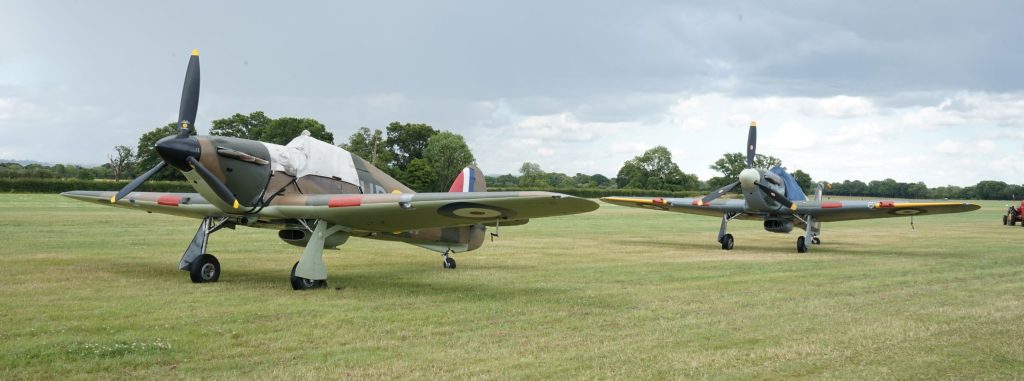
Wearing full wet-weather gear, I sat in the bus as it ploughed through the puddles towards the Headcorn Aerodrome. Having arrived in England a few days before from the south of France, I was experiencing something of a climate shock. I had booked a three day ticket to the Headcorn Battle of Britain Air Show, hoping to experience something of the sights and sounds that were common over the skies of southern England in the summer of 1940. As I looked out through the foggy windows at the wet paddocks, I wondered if the entire event would be abandoned.
The Headcorn airstrip runs perpendicular to the road, and as the bus passed the end of the runway, I caught a glimpse of two Hurricanes sitting on the flight line. The only Hurricanes I had ever seen were static displays inside museums, and for a moment I forgot all about the weather. Headcorn might not have been a Battle of Britain airfield, but there were Hurricanes on a grass airstrip in Kent.
Jumping off at the next stop, I walked the few hundred metres in the rain to the aerodrome entrance. A couple of jovial volunteers pointed me in the direction of the admission gate, and after a quick ticket check I entered the spectator grounds. A line of stalls had been set up parallel to the airstrip, most selling aviation related merchandise and some collecting for various charities. Food vendors waited for the punters to arrive, and I expected the ice-cream sellers were as bummed as I was about the cool, rainy weather.
Making my way to the grass runway, a collection of historic aircraft were lined up, with tarps protecting their open cockpits from the rain. I wasn’t able to get close to the Hurricanes I had seen from the bus, as they were parked up at the far end of the strip in front of a VIP area.

Broadening the Battle of Britain theme somewhat, a couple of C-47s and a collection of military vehicles were parked outside the wartime-era dispersal hut (although Headcorn was a wartime strip – known as RAF Lashenden – the hut was relocated from RAF Bridgnorth1).
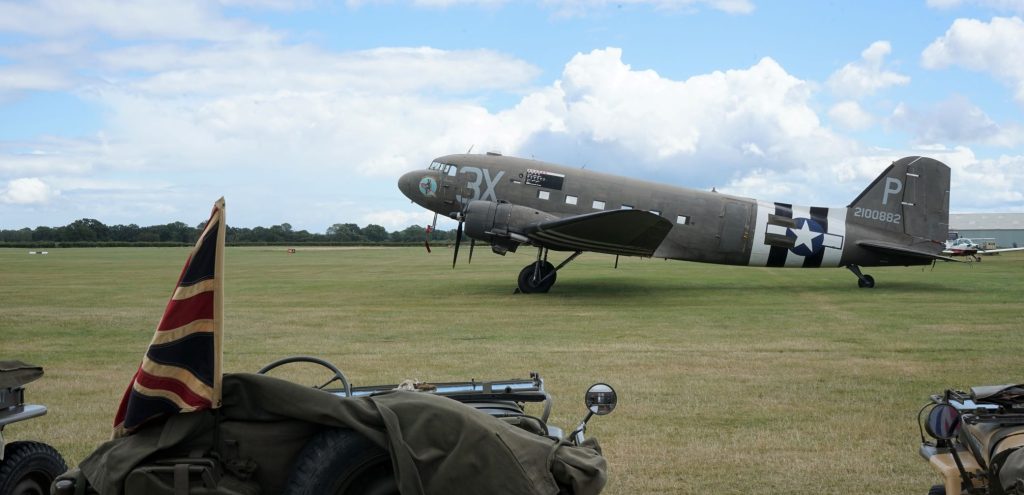
After having a look around, I sat in the rain and waited for the scheduled 12 o’clock kick off for the flying events. I was thankful I had decided to wear a long-sleeved thermal as part of my four upper layers. The cloud sat low over Headcorn, and frequent showers swept across the airfield. I thought to myself there’s no chance they’ll fly in this, and sure enough an announcement came across the PA that the air displays had been postponed until 1500.
With three more hours to kill, I had another wander around, then returned to my seat in the rain. As I waited, I began to wonder whether the British had sought an empire not for resources and strategic power, but rather just for somewhere to live with half decent weather.
With 3 o’clock drawing near, the sky had brightened marginally, and so had my mood. Then, without warning, a Spitfire and a Hurricane roared across the top of the airfield. I stood up, and with wide eyes and mouth agape like a child, watched the aircraft bank and turn for another pass.
Apart from chancing on a Spitfire flaring and landing at Duxford many years ago, this was the first time I had ever seen either a Spitfire or Hurricane in the air. Merlin engines snarling, flying low and fast overhead, it was a sight and sound I’ll never forget. After sitting in the rain for hours, and fully expecting all air displays to be abandoned, I might have even had tears in my eyes. Watching the two aircraft fly in formation, then swoop in and land on the grass strip, was brilliant.
After a shaky start, things were looking up. It was the beginning of a great weekend, despite the weather disrupting the planned events across all three days.
The Authenticity Debate
What bigger thrill for a warbird nut than to see WWII aircraft still flying? But how authentic are the vintage aircraft wowing the crowds at air shows around the world?
It’s the ‘grandfather’s axe’ dilemma: if you’ve had the handle replaced a couple of times and just put a new blade on, is it still grandpa’s original old wood cutter?
The International Group for Historic Aircraft Recovery (TIGHAR), provides a useful ‘Guide to Aviation Historic Preservation Terminology’.2 They define a ‘restoration’ as: ‘Returning the existing fabric of an object to a known earlier state with minimal introduction of new material‘. Compare this to a ‘reconstruction’: ‘Returning an object to a known earlier state by means of repair of the existing fabric and, to a substantial degree, its replacement with new materials‘. A replica is defined as: ‘An object constructed to represent, to a greater or lesser degree of accuracy, an object which existed at some previous time‘.
Many surviving WWII aircraft, either displayed in museums or in flying condition, were recovered from wreck sites or scrap yards decades after the end of the War. In the case of airworthy machines, enabling them to fly again is more than likely to require the replacement of components ‘to a substantial degree‘. These replacement parts may be: original, unused factory spares; sourced from other wrecked airframes; or fabricated from new materials to original specification.
Thus, using the TIGHAR definitions, these aircraft are reconstructions. Those retaining very little of the original aircraft, and composed mainly of newly manufactured components, could arguably be more accurately called ‘replicas’.
For some projects, the processes undertaken to bring a WWII aircraft back to flying condition have been publicly documented. In others, little information from the restoration companies is readily available, and I suspect this is intentional.
At the end of the day, when the historic warbirds come home to roost, it’s up to the individual enthusiast to decide how ‘authentic’ a particular aircraft is. For me personally, I like to know the provenance of the planes I see, and the more original the better. However, I have some understanding of the realities of flying historic aircraft, and I still got a huge buzz out of seeing each of the Spitfires and Hurricanes at Headcorn.
With respect to the above, I have included some details below about the two Battle of Britain aircraft which featured at the Headcorn Battle of Britain Air Show.
(When identifying the aircraft in this post I have listed the original factory construction date, Mark and serial number)
One of three Hurricanes appearing over the weekend at Headcorn was R4118. Considering the Air Show was dedicated to the Battle of Britain, this aircraft was very special indeed. R4118 was assigned to 605 Squadron RAF which was based at Drem, Scotland in mid-August 1940 and then relocated to Croydon, Surrey, on 7th September. R4118 flew 49 sorties during the Battle of Britain, and brought down five Luftwaffe aircraft. It is claimed that after restoration, 65 percent of R4118 is still original.3,4
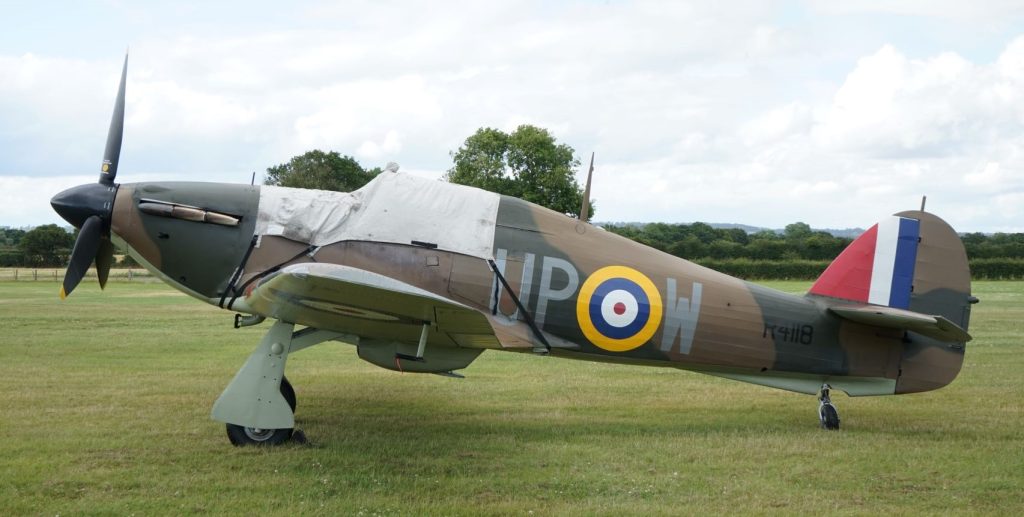
One of the pilots that flew R4118 during WWII was fighter ace Flight Lieutenant Christopher Currant DSO DFC.

Christopher Frederick Currant was born in Luton and joined the RAF prior to World War II. During the Battle of Britain F/L Currant flew with 605 Squadron, shooting down eight enemy aircraft and sharing in the destruction of a further five. Although he made two crash landings as a consequence of combat damage, he survived the war and retired from the RAF in 1959.3,5
Another was Pilot Officer Robert Foster DFC.

Robert William Foster was born in London, and joined the RAF just a few months before Britain declared war on Germany. He flew with 605 Squadron during the Battle of Britain, and later with 47 Squadron against the Japanese. He retired from the RAF in 1947 as a squadron leader, and when interviewed in the early 2000s said: ‘…if one day you hear the distinct sound of a Merlin engine and, looking up, see good old UP-W flying overhead, raise your hand and say loud and clear, “Good luck, good flying and thank you.”3,6
R4118 is as close as it gets to seeing an all-original Battle of Britain aircraft in the sky. Although I had yet to read Pilot Officer Foster’s quote, and therefore didn’t greet the aircraft as instructed, I was very grateful to have had the chance to see it fly.
Also appearing at Headcorn was Hurricane P3717, which also flew during the Battle of Britain, serving with 253 and 257 Squadrons.7 Unlike R4118, I was unable to find out how much of the original aircraft (or more accurately the post-Battle of Britain version of P3717, the aircraft having been upgraded in 1941 from a Mk I to a Mk IIA before being sent to the Soviet Union) still exists. One source stated ‘…its crashed remains were recovered from the Kola Peninsula (Russia) and brought back to the UK…’7 for restoration, which suggests much of the original aircraft may have required replacement.
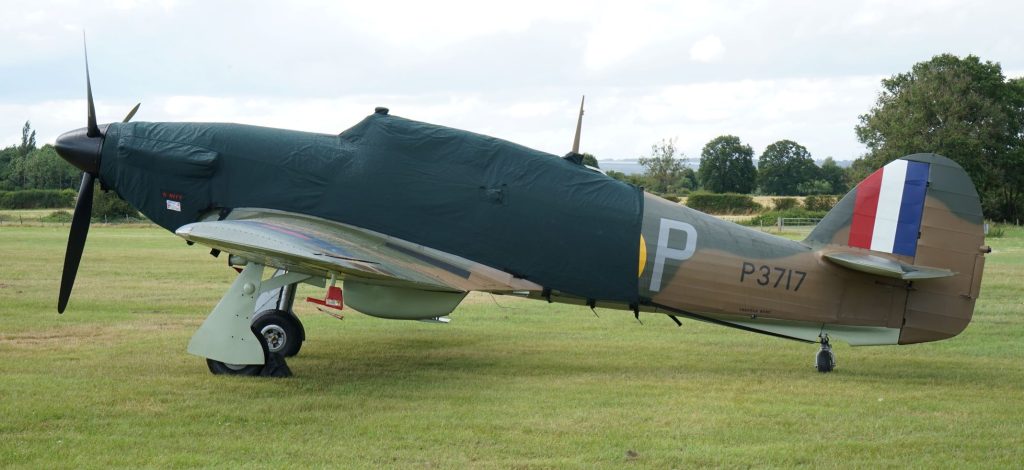
Pilot Officer Wlodzimierz Samolinski was one of the pilots that flew P3717.

Wlodzimierz Michal Czech Samolinski was born in Poznan, Poland, and joined the Polish Air Force before the outbreak of World War II. He escaped Poland after the German invasion and made his way to England where he joined the RAF. During the Battle of Britain Pilot Officer Samolinski flew with 253 Squadron, destroying two enemy aircraft (one in P3717). He did not return from a combat sortie on 26th September, 1940, when just 23 years old, and has never been found.7,8,9
The third Hurricane flying at Headcorn for the Battle of Britain Air Show was 5403.
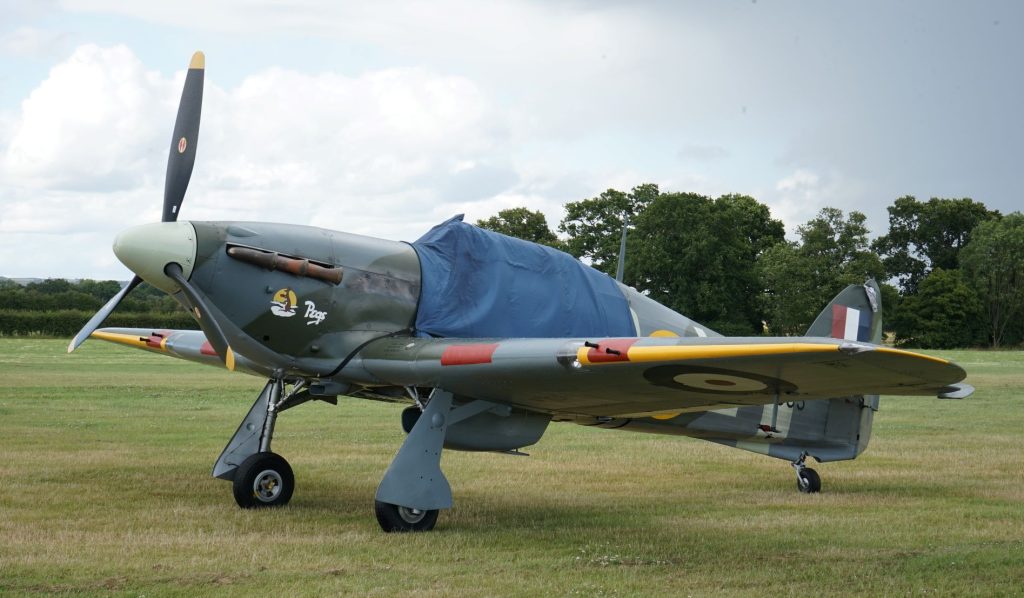
During the weekend, the crowd was treated to the spectacular sight of three Spitfires and three Hurricanes making formation passes above Headcorn.
The four Spitfires flew at the Headcorn Battle of Britain Air Show were N3200, NH341, MJ444 and RR232.
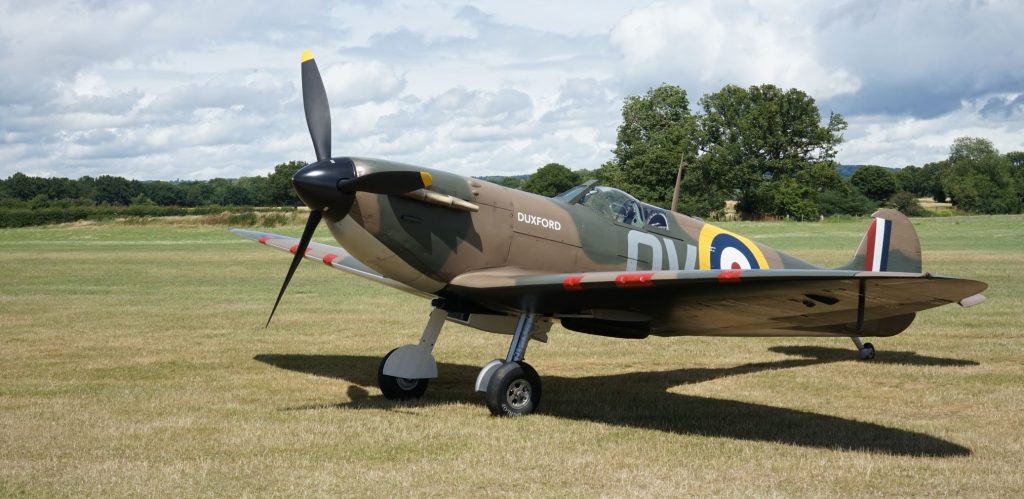
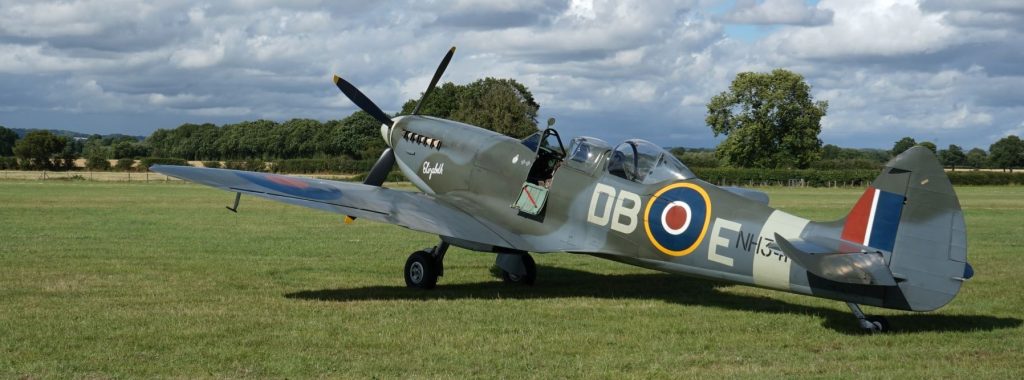
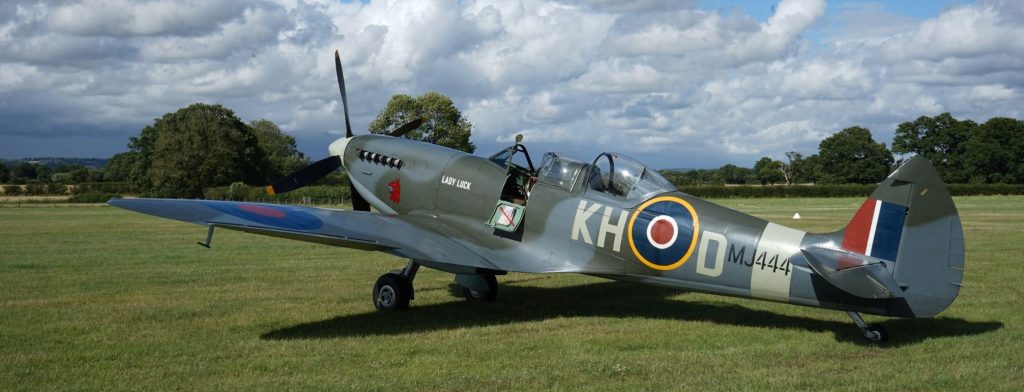
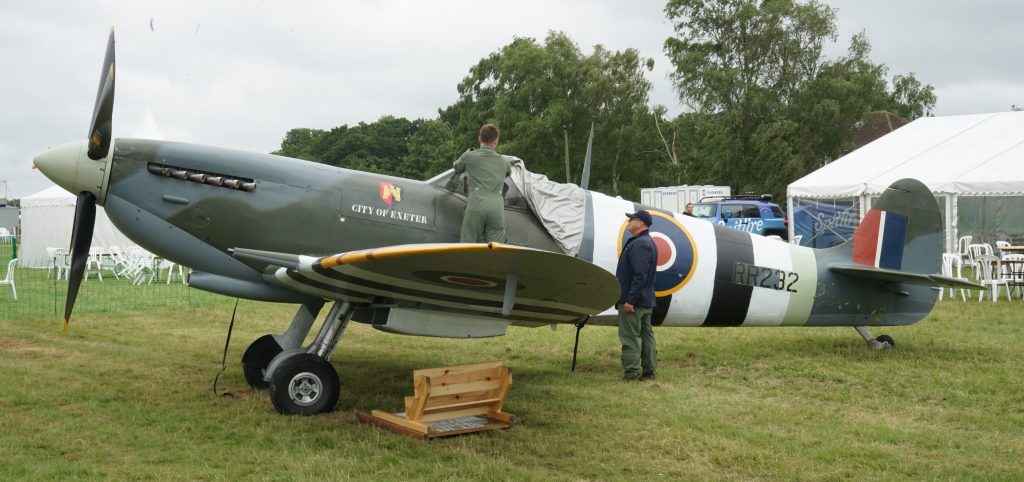
The Headcorn displays also included the arrival of an ‘enemy aircraft’ over the airfield. Two Spitfires were scrambled to intercept a ‘Messerschmitt Bf 109’, represented by a Hispano Buchon. The two Spitfires got on the tail of the Buchon, sticking with it as it wheeled and turned in mock evasive action above the aerodrome. This ‘dogfight’ re-enactment gave a little glimpse into the high speed, high stakes air battles that took place over Kent in the summer of 1940.
Despite the weather, the Headcorn Battle of Britain Air Show had been a fantastic experience. On the Sunday night I packed my gear in preparation to move on in the morning. I wasn’t going far; I would continue my search for The Few at the site of one of Kent’s frontline Battle of Britain airfields…
1Aero Legends, 2024, ‘ Headcorn Aerdrome’
2The International Group for Historic Aircraft Recovery, 2017, ‘The Tighar Bguide to Aviation Historic Preservation Terminology‘, Oxford, Pensylvania
3Hurricane Heritage, 2022, ‘About 4118‘
4 History Croydon Airport London, 2024, ‘World War II and RAF Croydon‘
5The Battle of Britain London Monument, 2007, ‘The Airmen’s Stories – F/Lt. C F Currant‘
6The Battle of Britain London Monument, 2007, ‘P/O R W Foster‘
7Riley, G. and Harbar, D., 2017, ‘Battle Of Britain Hurricane Returns To The Sky‘, Key.Aero
8The Battle of Britain London Monument, 2007, ‘P/O W M C Samolinski‘
9Kenley Revival, ‘In memory of Pilot Officer (Pilot) Wlodzimierz Michal Czech Samolinski‘
10Aircraft Restoration Co, 2024, ‘Hawker Hurricane IIB BE505‘
Hurricane silhouette sourced from creazilla
If you have any thoughts on the Authenticity Debate, or any other part of this post, please let me know in the comments section below!
If you enjoyed this post, you may also like Searching for The Few Part I, Hangar 10
RAF COmmands The Hawker Hurricane Database (rafcommands.com)
Kenley Pilot Officer (Pilot) Wlodzimierz Michal Czech Samolinski – Kenley Revival
Leave a Reply